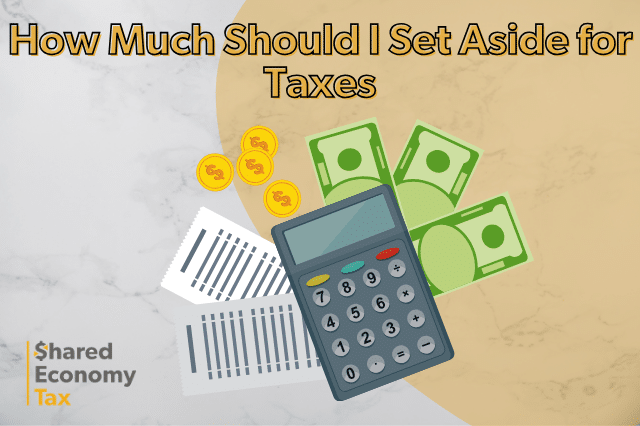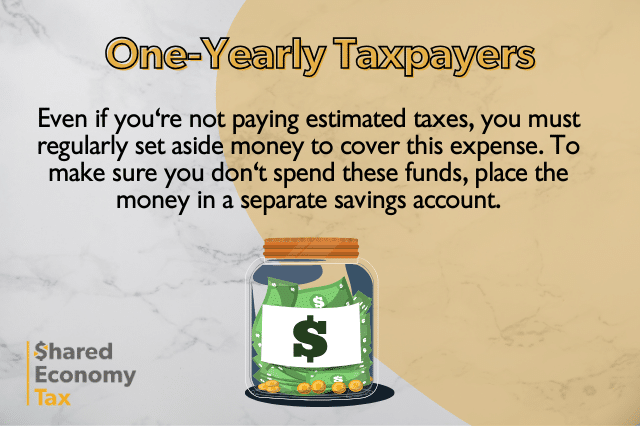
If you’re a self-employed individual or freelancer, taxes won’t be removed before you receive your paychecks, which means that you’ll owe the IRS. You must save money during the year to meet your tax obligations. This guide offers an in-depth look at “How much should I set aside for taxes?”.
Understanding Your Tax Obligations
Regardless of where you work and what you do to earn money, you’ll have tax obligations you’ll need to meet. Your tax liabilities depend on factors like how much you earn and the types of credits and deductions you qualify for.
Some of the most common tax burdens you’ll encounter include self-employment, SALT, and federal income taxes. The income you earn is usually taxed at the state and federal level.
When you’re self-employed, you’ll need to pay for the taxes that an employer would usually cover. The self-employment tax rate is 15.3%. It covers Social Security and Medicare. If you itemize deductions on your federal return, you may be able to deduct state and local tax (SALT).
The factors mentioned previously can impact your tax planning strategy. Once you calculate your income tax, you’ll need to consider if your taxable income can be reduced.
Estimate Your Taxable Income
Taxable income is the primary figure the IRS uses to calculate your tax bill. It involves any money you earn from work or investments. Accurately estimating this number can help you plan for taxes more effectively. It will give you a better idea of how much you’ll owe on your return.
Use your previous year’s total as a reference point. If you made $50,000 last year as a self-employed individual and believe that you’ll make a similar amount during the current tax year, you can effectively identify how much you’ll need to pay.
Make sure that you take advantage of the “safe harbor” rule where possible. If you owe quarterly taxes but forget to file them on time, a fee would normally be assessed. The safe harbor rule states that you’re protected from penalties if you meet specific conditions, such as owing less than $1,000 in taxes.
How Much Should I Set Aside for Taxes?
Now that we understand tax obligations and taxable income, let’s think about saving for taxes. The typical rule of thumb in this situation is to save around 30%-35% of your annual income for taxes.
Let’s say that you currently live in California and are a single filer with a self-employment income of $6,000 per month. You’d have a federal income tax of 22% and a state income tax of $3,009 plus 9.3% of anything you earn above $68,350. Based on this figure, you’d likely owe $19,189 in taxes, which amounts to $1,599 per month.
If you live somewhere like Florida, they don’t have a state income tax. You’ll file single and report the same monthly income. With a federal income tax of 22%, you’ll owe $15,840 for the year, which is $1,320 per month. Keep in mind that filing a joint return could change the amount you need to save for taxes.
Estimated Taxpayers
If you’re required to pay estimated taxes, you must set aside some money to cover this quarterly expense. You can use the safe harbor rule mentioned earlier to calculate your quarterly payments. Alternatively, you could accurately calculate your taxes owed every quarter. Once you make these calculations, you should know how much money you need to set aside. Make sure you identify the tax bracket that applies to you before you calculate your taxes.
One-Yearly Taxpayers
If you don’t make estimated payments, setting aside funds to cover this expense is even more crucial. Year-end tax bills can become quite sizable, and you could find yourself in a tough spot with the IRS if you don’t have the funds to cover the payment. While it’s possible to set up a payment plan with the IRS if you owe taxes, it’s best to save up early so that you have what you need when you file.

The Easy Way to Save for Taxes
The simplest way to save for taxes is to set aside 30% of your income. This amount will typically cover your tax bills, but be forewarned, you could come up short at the end of the year with this method.
If you have money left over at the end of the year, think of it as your own little tax refund. It’s not the best method, but it’s a serviceable rule of thumb, and many business owners and self-employed individuals find it works fine for them in most cases.
Closing Thoughts
When you’re a freelancer or self-employed individual, it’s up to you to save for your quarterly or annual taxes. If you don’t gradually save for these taxes, you’ll owe a lot of money to the IRS and may need to enter a payment plan. A tax advisor is the best person to discuss this issue with in detail. They can help you minimize your taxable income and maximize your deductions.
If you’re ready to upgrade to a tax firm that understands your business, my team would love to connect with you. Get started now by signing up for a one-on-one strategy session with a Shared Economy Tax pro to see how much we can help you save.